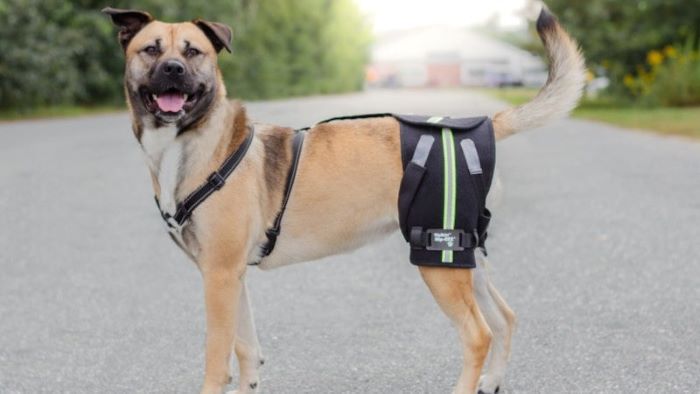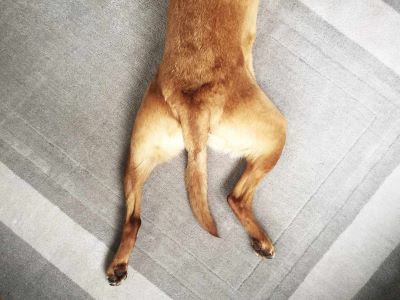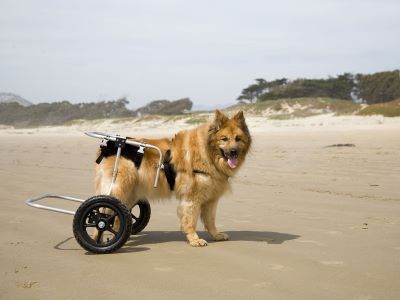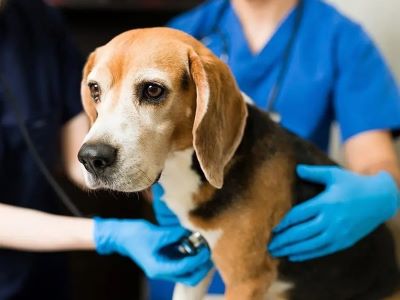Hip dysplasia in dogs is a condition in which abnormal development and growth of a dog’s hip joint happens. This can lead to pain and reduced mobility in dogs.
But worry not we are here to understand what causes hip dysplasia in dogs,🐶 what are the treatments and ways to make their life healthy and happy? So, without further ado let’s start….!

Hip Dysplasia in Dogs?
Hip dysplasia is a common orthopaedic condition in dogs that results from improper development of the hip joints. It can lead to arthritis, lameness, and pain. There are various factors that increase the risk of hip dysplasia:
Genetic Bias
Hip dysplasia has a strong genetic component. Certain breeds are more prone to the condition based on their genetics.🧬 These include larger breed dogs like German Shepherds, Labrador Retrievers, and Saint Bernards.
The genes responsible for hip joint formation have not all been identified, but it is clear that some dogs inherit genes that predispose them to hip dysplasia.
Environmental Factors
The rapid growth rate during puppyhood may contribute. Excess nutrition and calories leading to fast growth puts increased stress on developing hip joints.
Overweight puppies are also more susceptible!
Exercise during puppyhood, especially on slippery floors, might increase the likelihood of hip laxity developing. Activities like climbing stairs should be avoided until around 12-18 months⌛ old when bones/joints are more mature.

Hip dysplasia is a genetic disease that is affected by factors such as diet, environment, exercise, growth rate, muscle mass, and hormones[1].
Dogs Prone to Hip Dysplasia
“German Shepherds, Golden Retrievers, and Labrador Retrievers are the most commonly affected breeds, but any large and giant breed dogs are at risk for canine hip dysplasia”, confirms Tiffany Tupler from PetMD.
Screening and radiographing breeding dogs for this issue, and not breeding affected animals, can help reduce prevalence in sensitive breeds. Certain breeds have higher chances of getting hip dysplasia, so responsible screening is recommended.✅
Symptoms of Hip Dysplasia in Dogs
Let’s see some symptoms of this disease in dogs:
- Difficulty getting up or stiffness, especially after rest.🛏️ Reduced activity and playfulness.
- Bunny hopping (using both hind legs together). Hind leg lameness or limping[2].
- Audible clicking or popping sounds from the hip joint. Loss of muscle mass in the hindquarters. Pain or discomfort when touched near the hips.
Upon seeing any of these signs please consult with a vet.🧑⚕️ They will assess your dog for a range of motion and discomfort. They will do X-rays to visualise the hip joint structure, Possibly, an MRI for more advanced images.
Treatments
Let’s see some of the treatments for hip dysplasia in dogs:
- Conservative management: Keeping the dog at an optimal lean body weight reduces stress on the joints. Overweight dogs experience a more rapid progression of arthritis. Short, frequent walks are ideal. Avoid running, jumping, or playing fetch.🧸

- Medications: Non-steroidal anti-inflammatory drugs (NSAIDs) like carprofen or meloxicam to control pain and inflammation.💊 Joint supplements like glucosamine, chondroitin, and omega-3 fatty acids may help slow cartilage breakdown[3].
- Surgical interventions: Replacing the femoral head and acetabulum with prosthetic implants. Provides significant improvement in function and pain relief. Removing the femoral head and neck eliminates bone-on-bone🦴 grinding of the hip joint.
Surgically adjusting and repositioning the hip socket to provide better support to the thigh bone. This is typically done in young dogs🐶 to prevent severe joint damage and postpone the necessity for a complete hip replacement.
In addition to medications and supplements, adjusting diet is crucial. Speak to your vet about what to feed a dog with inflammatory bowel disease, as the right nutrition can help reduce flare-ups.
Prevention
Preventing this in dogs is about making smart choices.✅ When it comes to breeding, it’s important for dog parents to be responsible. They should check if the mum and dad dogs have healthy hip joints before having puppies.
It’s also a good idea to mate dogs that don’t have hip issues to reduce the risk for the puppies.
For certain breeds more prone to hip dysplasia, regular vet check-ups and X-rays can help catch the problem early, even before the dog shows symptoms. This way, they can start treatment sooner⌛ and keep the dog more comfortable.
Proper nutrition is another key.🗝️ Just like people, dogs need a healthy diet.
It’s crucial not to overfeed puppies or give them food that makes them grow too fast. A vet can help with advice on what to feed puppies.

Prevention section in Dogs
Dogs with hip dysplasia can benefit from exercises and treatments similar to what people might have. Physical therapy for dogs can help build muscle strength and improve joint mobility. Special exercises help to relieve pain and make it easier for dogs to move around comfortably.🐶
Assistive Devices
To make life easier for dogs with hip dysplasia, there are helpful tools. Harnesses are one example. They provide support for a dog’s hind end when they walk.
Orthopaedic beds offer comfortable support for rest. These devices make it easier for dogs to get up, move around, and sleep with less discomfort.💤
Monitoring and Follow-Up
Hip dysplasia is a long-term condition, and regular check-ups with the vet are important. Vets will keep an eye on how the dog is doing and make any necessary adjustments to the treatment plan.📃
They may recommend medication changes or other strategies to manage pain and discomfort. This ongoing care ensures the best possible quality of life for dogs with this disease.
Home Remedies
To manage hip dysplasia at home, focus on weight management through a balanced diet and controlled portions. Take your dog for gentle walks or swimming.
This will exercise the hips without causing too much pain. Put a warm compress on the sore hips for 10-15 minutes. This will make your dog more comfortable. Feed your dog food that is high in omega-3 oils. These foods help reduce swelling.
Also, turmeric works tremendously. The best turmeric for dogs can help with arthritis and joint problems as it reduces swelling and pain. With an immune system it helps fight infections and in digestion, as it improves bile.
Mix turmeric powder with water to make a paste. Add black pepper too. This helps your dog absorb more turmeric. You can also get turmeric supplements made for dogs. And use high-quality, organic turmeric for best results, you may also consult with the vet about this.
Supplementing a puppy's diet early on with a quality turmeric for dogs may help support joint health and prevent issues like hip dysplasia later in life
FAQs
1. What are the first signs of hip dysplasia in dogs?
Weakness and pain in the hind legs are the usual clinical signs. The dog appears wobbly and is reluctant to rise from a sitting or lying position. Some dogs will limp or be reluctant to climb stairs. These signs can be seen in puppies as early as a few months old but are most common in dogs one to two years of age.
2. Hip Dysplasia in Dogs?
Hip dysplasia is an abnormal development of the hip joint in large dogs. It is characterized by a loose joint and subsequent degenerative joint disease (osteoarthritis). Excessive growth, exercise, nutrition, and hereditary factors affect the occurrence of hip dysplasia.
3. How long can dogs live with hip dysplasia?
Hip dysplasia should not shorten your dog’s life at all. As long as it receives treatment and is well taken care of at home, any dog with the condition should go on to lead a full and active life. Problems only occur if the dog eats too much or discomfort prevents them from exercising enough to keep their weight down.
Summary
So, in conclusion, hip dysplasia in dogs is a condition in which abnormal development and growth of a dog’s hip joint happens. This can make a dog’s life difficult due to mobility issues.🩼
We can prevent this issue by medications, vet intervention and taking active care of our dogs. Always remember it is our duty as pet parents to make them feel happy and healthy!❤️🩹
Reference:
- Hip dysplasia in dogs | VCA Animal Hospital | VCA Animal Hospitals.
- Staff, A. (2023b). Hip Dysplasia In Dogs: Causes, Symptoms, and Treatment. American Kennel Club.
- Anti-inflammatory drugs and their effects on cartilage synthesis and renal function. (n.d.). National Library of Medicine.



